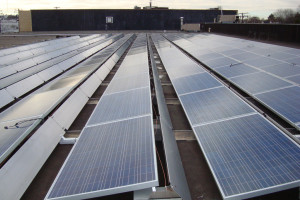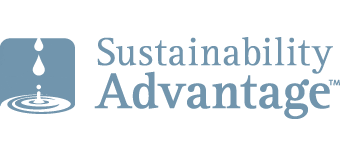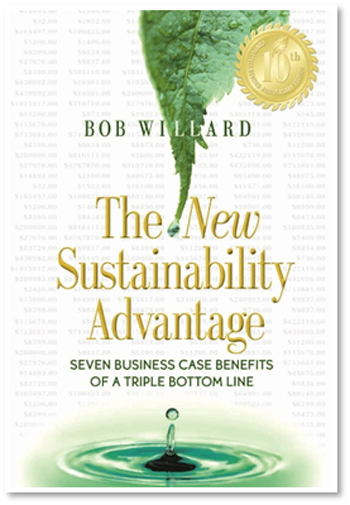Sustainability Business Case #2: ROI

In my last post, I identified three ways to frame the business case for sustainability, including through improved profit. The profit-based business case is robust and smart sustainability initiatives can improve profit by at least 51 percent to 81 percent within three to five years while avoiding a potential 16 percent to 36 percent erosion of profits if they did nothing.
Now let’s consider the ROI perspective.
Sustainability capital projects are approved the same way any capital project is approved. Companies only invest precious capital in projects that meet stringent payback periods and yield at least a required rate of return—the hurdle rate—in a discounted cash flow analysis. The riskier the project, the higher its required hurdle rate.
When I show audiences the very significant financial benefits that are possible when sustainability-related strategies are implemented, they wait for the other shoe to drop. They want to know what the costs are. How much does the company need to invest to reap these benefits?
The Financial Benefits of a Sustainability Strategy
In The New Sustainability Advantage, I reference VeriForm, an energy-intensive steel fabricating company located in Cambridge, Ontario. Under the leadership of its President and Founder Paul Rak, the company invested $46,186 between 2006 and 2008 to cut its energy costs. VeriForm reduced its natural gas consumption by 90 percent, it’s electricity bill dropped by more than 58 percent, and its profit increased by 76 percent.Equally impressive, the average payback period for its 42 energy saving projects was 6.3 months, which equates to an annual ROI of 190 percent. Some energy efficiency projects paid for themselves in just weeks.
There are several things we can learn from the Veriform case about the investment denominator in the ROI calculation:
1. Reallocating Existing Budgets
First, funds for many sustainability efforts are already in departments’ operating budgets. We are simply finding new ways to use those existing allocations, rather than requiring more “investment” money. If the payback period is less than a year, the dollars can be treated as a cost rather than a capital investment, and a cash flow-based internal rate of return (IRR) would be a more appropriate calculation.
2. Self-Funded Sustainability Projects
Second, sustainability projects requiring capital can be self-funded by savings generated by other sustainability projects. For example, we could peel off some of the savings from energy, material, and waste reduction projects and set them up as a Sustainability Capital Reserve. This rotating pool of capital can then be used to fund/invest in additional sustainability projects. Although the projects are self-funded, their ROI calculations assure executives that the funds could not be invested more profitably elsewhere.
3. Taking Advantage of Government Grants
Third, companies can also take advantage of government grants and incentives for many sustainability projects. Early movers usually get the most grants, although Veriform only used $1,000 of such funds to support its 42 projects. Since it is not the company’s money and can only be used for sustainability projects, an ROI calculation is less required for comparative purposes.
4. Hitting the Wall
Fourth, even with savings of 58 percent on its electricity bill, at some point Veriform will hit the conservation wall. It won’t be able to achieve further reductions from ingenious technology changes and employee behavior changes and will need to invest in projects like solar panels, wind turbines, geothermal energy, co-generation, or other capital intensive measures. Then, the projects must compete for the company’s overall pot of available capital and show higher ROI than other competing projects.

Other investments to enrich the bottom line pale in comparison to high-yield, low-risk investments in sustainability projects, especially when judged against how much more top-line revenue would have to be generated to have an equivalent bottom-line impact.
Wal-mart’s Savings From Sustainability
For example, Wal-mart invested $500 million into sustainability projects that paid back in four years or less. The projects were an incredible profit engine for the corporation. Begun in 2005, the initiatives save more than $500 million a year. Wal-mart works on three percent net profit, so to make another $500 million in profit it would have to sell an additional $16.7 billion in goods. It’s a safe bet that Wal-mart would need more than a $500 million investment in marketing to reap that top-line benefit and achieve a profit improvement equivalent to what it is realizing from its sustainability investments.
So far, we’ve discussed the denominator in the ROI calculation—the size of the investment. The sizing of the numerator—the return—deserves attention as well. Of course, the financial return is important. This is usually the direct eco-efficiency saving that flows straight to the bottom line from projects that save money on the company’s energy, water, materials, or waste bills. The financial benefits should also include:
- A piece of the increased revenue from business-to-business and business-to consumer customers who want to buy from suppliers who care about sustainability, as evidenced by the sustainability project.
- A piece of the increased productivity from employees who are energized by the company’s sustainability efforts, which resonate with their personal values.
- A piece of the reduction in expensive voluntary employee attrition because employees want to stay with a company doing social and / or environmental things that they care about, like the sustainability project.
Plus, isn’t it time that management accountants also include social return on investment (SROI) and environmental return on investment (EROI) in the numerator, as well, to reinforce that they matter?
SROI uses financial proxies and monetization of the value to stakeholders of the company’s efforts. EROI uses financial proxies and monetization of value of company efforts to protect and restore ecological systems and services. These returns can be huge and are vital to the company’s social license to operate. Why aren’t we capturing them and legitimizing their importance to the role of business in society?
The ROI for sustainability projects is very attractive when compared with other investments by the company. When social and ecological returns on investment are included in the equation, the picture brightens even further.
Next: Is a share price-based business case for sustainability equally convincing?
Bob





Comments are closed.